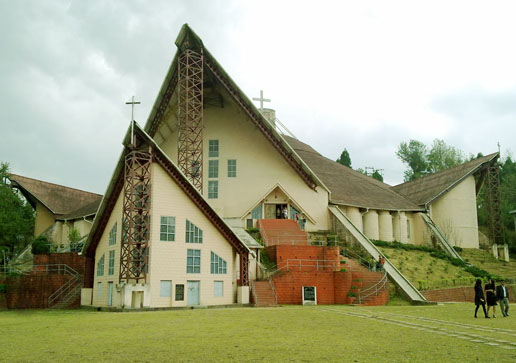Nagaland Tourism
Nagaland is the twenty-fifth largest state of India with an area of 16579 Sq Km which placed in the north-east corner of India. According to the census of India 2011, approximately 1980602 people reside here. The state share an international border with its neighboring country Burma to the east and its neighboring states are Assam by the west and North, AP or Arunachal Pradesh by the by north and Manipur to South.

The capital city of Nagaland is Kohima and Dimapur is the largest city of the state. Some other examples of big cities in Nagaland are Mokokchung, Tuensang, Wokha, Mon, Zunheboto, Tuli, Naganimora, Changtongya, Tizit, Tseminyu, Bhandari, Akuluto and Pfutsero. The state is combined with eleven administrative districts like, Dimapur, Kiphire, Kohima, Longleng, Mokokchung, Mon, Peren, Phek, Tuensang, Wokha and Zunheboto District. Read more...
Climate of Nagaland
The climate of the state varies with its land elevations. Normally the higher elevation regions of mountain ranges receive a cold weather season in winter and plain regions of Nagaland (speciously adjacent to the Assam border) receive a common monsoon weather which is similar to the other state of India. The weather season of Nagaland can be divided into three divisions namely, summer, winter and monsoon.
Weather in summer
Normally the summer season of Nagaland is continued from mid of May to August. The average temperature during this season varies from 15°C to 32°C. This season is very much influence by monsoon winds which produce heavy rainfalls in the state.
Weather in winter
Normally the winter season of Nagaland is continued from October to February and the average temperature during this season varies from 3°C 24°C. But some regions of hilly areas temperature drop in freezing point, bellow 0°C.
Weather in monsoon
Normally the monsoon season of Nagaland is continued from June to September and the average annual rainfall of the state is approximately 240 cm.
Culture of Nagaland
Languages in Nagaland
The people of Nagaland (popularly known as Nagas) basically divided into several regional or tribal community groups (sixteen Naga tribes); among them the Konyak, Angami, Ao, Lotha, and Sumi tribal are the largest communal groups. Above mentioned Naga tribes use lots of regional or local dialect (near about sixty) as their spoken languages but these languages have no scriptural tradition and so English is use as a medium of education and officially dealings. Nagamese and Hindi are other important language of the state and maximum of state resident know little or more Nagamese dialect.
Religions and Festivals in Nagaland Usually the people of Nagaland or Nagas follow the Christianity. near about 90.03% of total population belong to this region group. Some other religious followers of the state are Hinduism (7.69%), Islam and rest are some tribal religions. Near about 85% of total population of Nagaland is directly dependent on agriculture and they lives in several odd villages situated on high hilly regions. Nagas are different from the people of other states in India and their culture and lifestyle are dissimilar to other communities. They celebrate lots of colorful and enjoyable festivals. Some important of these are Horn Bill Festival, Moatsu Festival, Nazu Festival, Sekrenyi Festival, Tuluni Festival and Yemshe Festival.